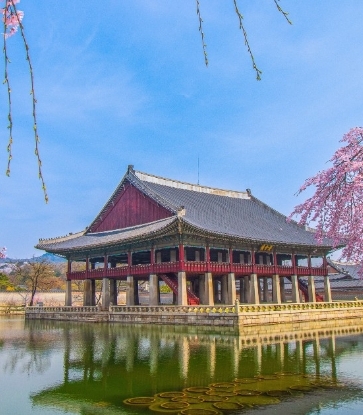Yukhoe, which is good as a side dish or a la carte dish, is a menu beloved by many people. The umami of high-quality beef fills your mouth as you chew, followed by pears with a crisp texture and mild sweetness, and the flavor of pine nut powder and egg yolk decorates the finish. It translates as 'Beef Tartare' in English, but it tastes and looks different from Western beef tartare. We tried to unravel the story hidden in Korean yukhoe.
History of Yukhoe
Although the food cultures of Korea, China, and Japan have many similarities, yukhoe is a food that developed only in Korea. In China, raw meat is rarely eaten, while in Japan, sashimi (raw seafood) is popularly enjoyed, but meat is not eaten raw.
Korean yukhoe is said to have been known from the Three Kingdoms period under the influence of Mongolia, but according to records, it seems that yukhoe appeared in the 17th century. Thereafter, it was not uncommon to find it mentioned in the representative culinary literature of the Joseon Dynasty, such as Siuijeonseo. However, that did not mean that yukhoe was a popular dish for everyone.
During the long reign of the Joseon Dynasty (1392-1897), not everyone could butcher a cow. As an agricultural economy, cattle was a controlled means of production, so it was forbidden to butcher cows except for the royal family. It was not easy to obtain beef, and it was difficult to obtain beef fresh enough to make yukhoe, so it was mainly enjoyed at royal banquets.

from the royal courts to a daily delicacy
The process of popularizing yukhoe fits perfectly with the development process of Korea's beef distribution industry. Until recently, beef butchering was managed by the government and only certain people could butcher them. But in the early 20th century, beef butchering factories and beef markets were finally established.
Thanks to the establishment of official beef markets in Seoul and Jinju, these two regions were the first to enjoy yukhoe. In particular, in Jinju, fresh raw beef became relatively easy to obtain, so bibimbap with yukhoe was developed as a famous local cuisine.

Types of yukhoe
These days, parts such as the strip steak with a lot of fat are also favored, as the marbled meat slowly melts in the mouth while chewing, giving it a rich, lingering flavor.
Typically, low fat rump and eye of round are used though there are no rules to specify this. The rump is the part of the butt that connects from the tip of the loin, and is the softest part of the hind leg of a cow. The eye of round is a cylindrical shaped meat that is attached to the rump. Both parts have less fat and have a good texture, so they are popular for yukhoe.
The best cuts
The seasonings are also varied. The first thing that comes to mind is yukhoe with a sweet ganjang (soy sauce), but salt is used instead of ganjang for the very traditional yukhoe. It is lightly seasoned with salt, sesame oil, and crushed sesame seed and served with vinegar gochujang sauce or vinegar mustard sauce. Gochujang yukhoe is sometimes made by mixing gochujang with beef. But Jeolla province-style gochujang yukhoe, which is seasoned with sweet and spicy gochujang sauce, is good to enjoy with rice.
Beef is mainly used for yukhoe, but it is not the only one to be used. In the past, people enjoyed pork yukhoe made with the intestines called gaphoe, and there are regions that enjoy yukhoe made with pheasant meat. In Jeolla province, you can enjoy chicken yukhoe, and in Jeju island, you can enjoy yukhoe made with horse meat.
Where to enjoy yukhoe

La Yeon
Three-Michelin Star, MICHELIN Guide Seoul 2022
Yukhoe Bibimbap is La Yeon's signature dish and its own interpretation. Thinly cut cold yukhoe is served on top of freshly cooked warm rice, seasoned with ganjang and sesame oil. The combination of warm rice and cold yukhoe, gently mixed, serves to present the yukhoe bibimbap at just the right temperature. The contrast of taste, texture, and fragrance that this temperature difference gives cannot be enjoyed anywhere other than La Yeon.

Buchon Yukhoe
Bib Gourmand, MICHELIN Guide Seoul 2022
In the middle of the gourmet street where Gwangjang market is located, Buchon Yukhoe makes yukhoe with fresh domestic beef supplied every morning. The yukhoe itself is so delicious that it doesn't need any side dishes, but we recommend trying the yukhoe with baby octopus tangtang-yi. You have to try this yukhoewith minced baby octopus at least once. Chewing the baby octopus and beef together fills your palate with rich umami.
Edited by June Lee in English.






















